Amed is a village in Northeast Bali known primarily for two things: diving (both scuba and free diving) and doing nothing. Doing nothing because multiple friends I’ve known who are not divers and have spent time there rave about how little they did there and how relaxed they were. Diving because there are over 50 scuba diving centers in the area and a score of free diving centers.
Since there are many places I can do nothing in around the world, you can guess why I came to Amed. The diving here isn’t spectacular, but it’s very nice and, more importantly, very easy. The majority of the diving up and down the nearby coast is shore diving. You grab your tanks and gear, walk down the black volcanic rock beach and into the water. And in many cases, there are porters to take your tanks down the beach to your preferred entry location. It’s also why there are so many dive centers here. With all the shore entry options (and no need to rent a boat) it’s a great place to inexpensively learn to dive.
An example of one of the dive sites in a beautiful setting.
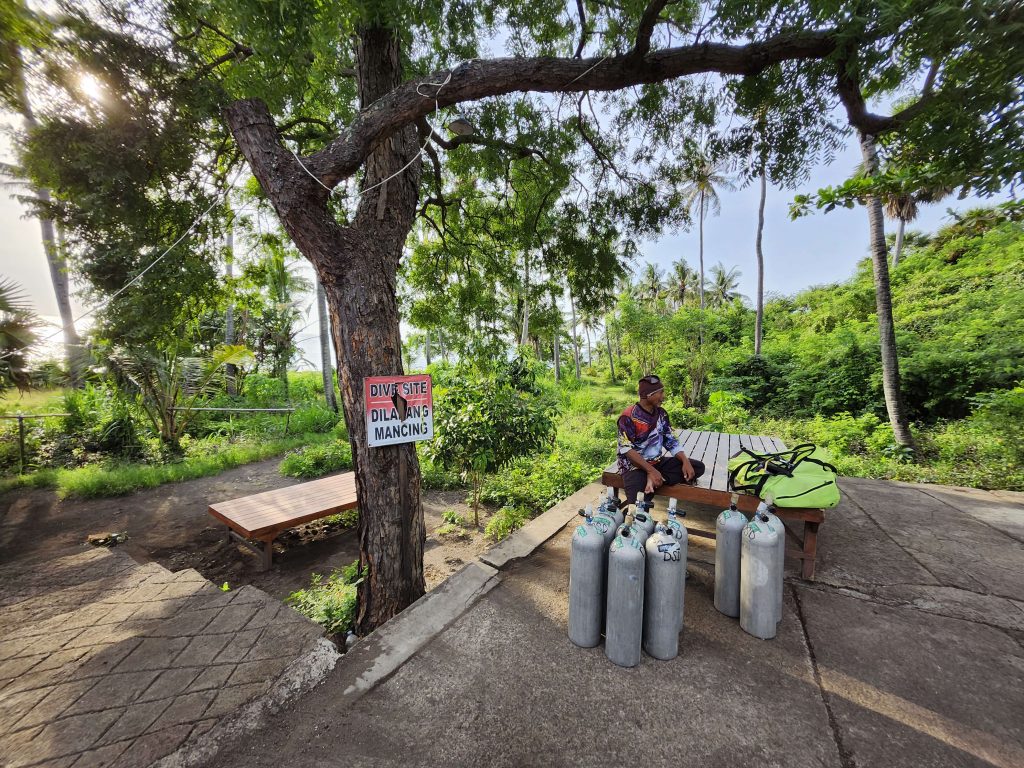
Above The Water
Amed is defined by its black sand beaches on one side…
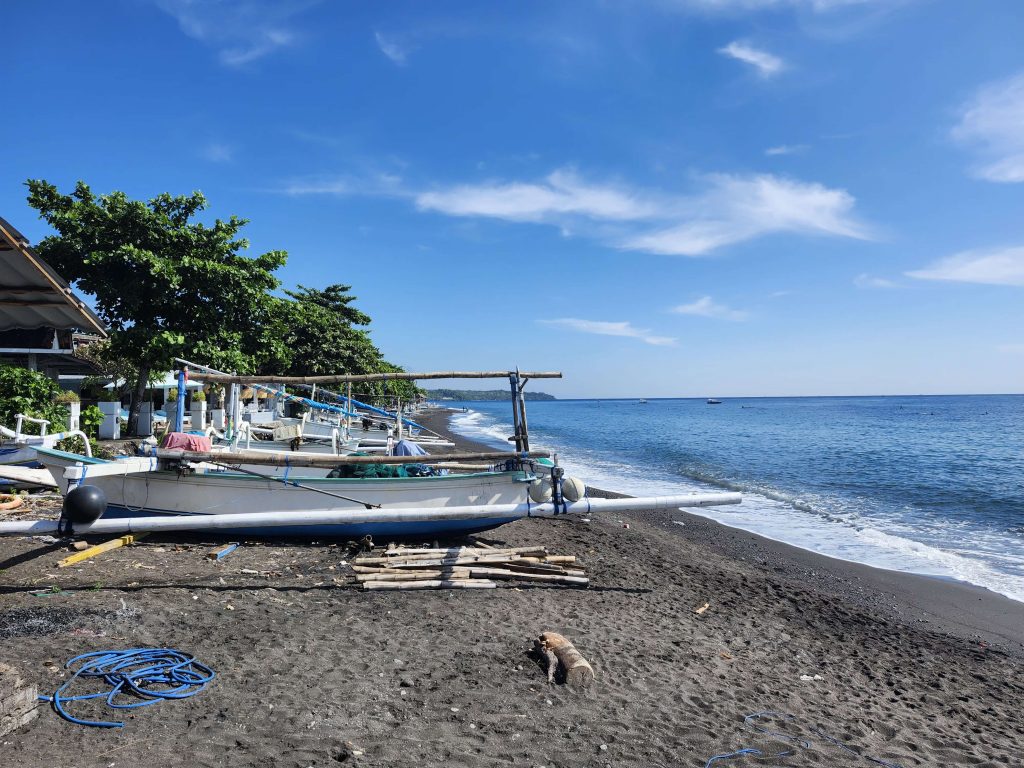
…and the views of towering 3,000 meter (10,000 feet) high Mount Agung on the other side.
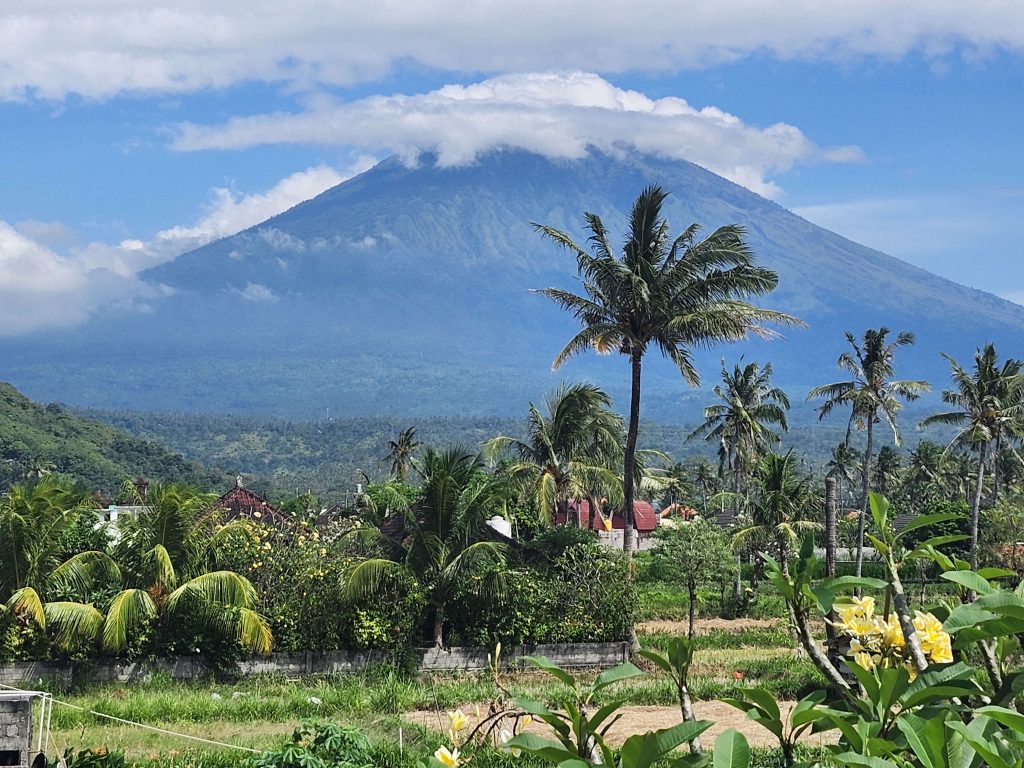
The view of Agung from the main road in town. There a lot of Westerners living in Amed: a large number of dive instructors (mostly scuba), a few digital nomads, and a number of people who stay there seasonally when the weather is good. For some reason there are a ton of French expats and tourists. That does mean the food is pretty good for such a small area 🙂
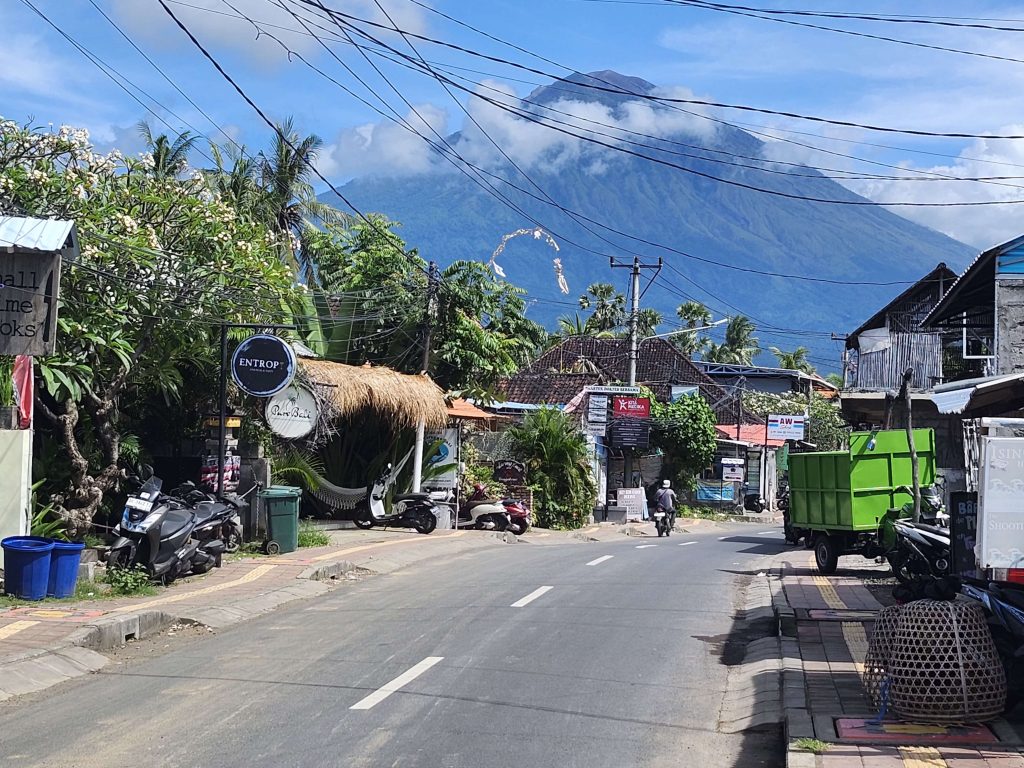
The main part of town can be ridden through in a few minutes.
The adjacent area of Melasti is where the typical Balinese rice fields are. However, they are rapidly disappearing as the tourist building boom is creating more housing in this area.
The most scenic road is on the coastline east of Amed. Unfortunately, the road is not in the best of shape now.
Since this is Bali, there are scores of scenic rice fields around the outskirts of town and in the surrounding villages.
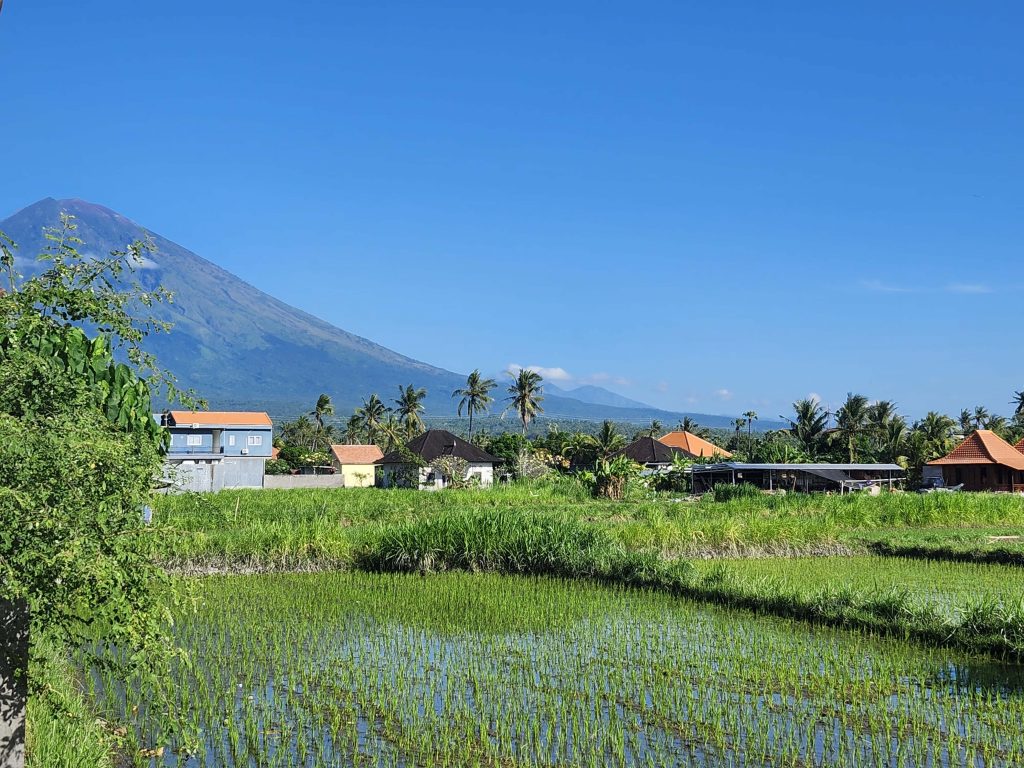
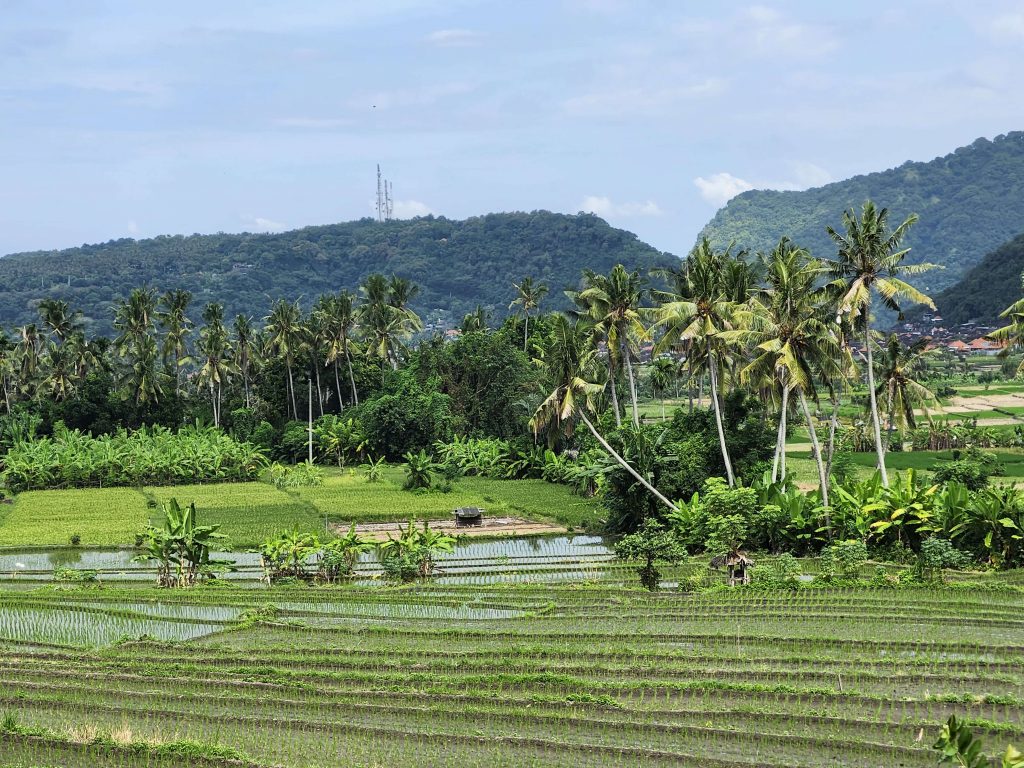
About 45 minutes outside of Amed is a beautiful lookout over rice fields and the ocean.
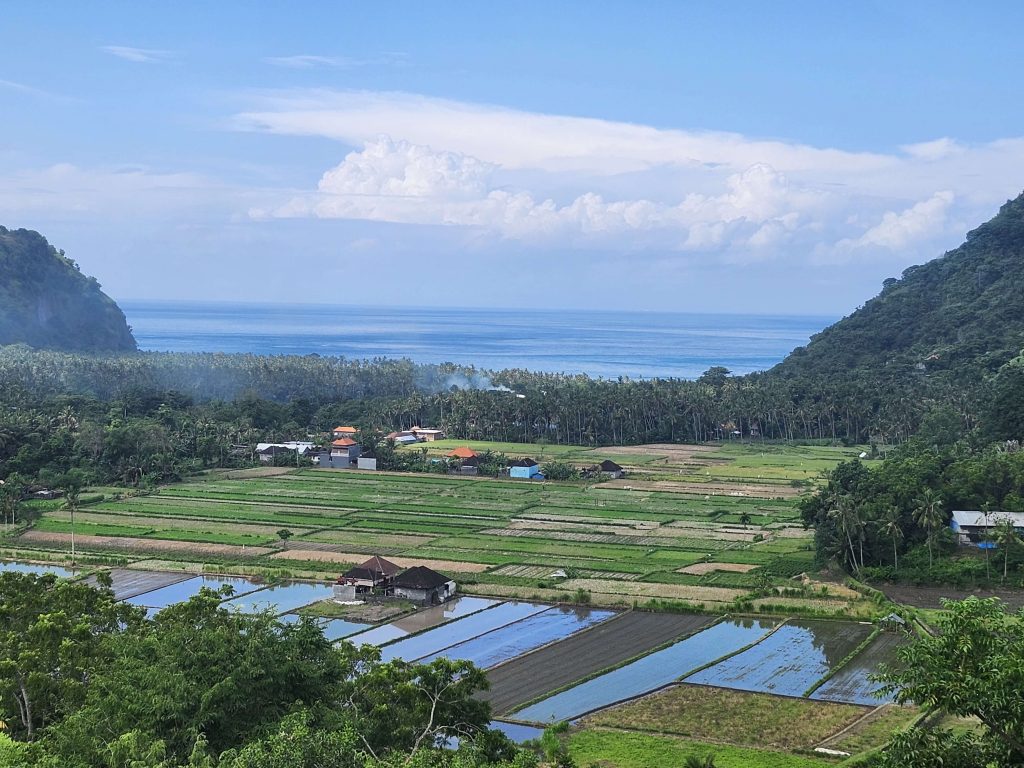
It’s popular with the local monkees as well.
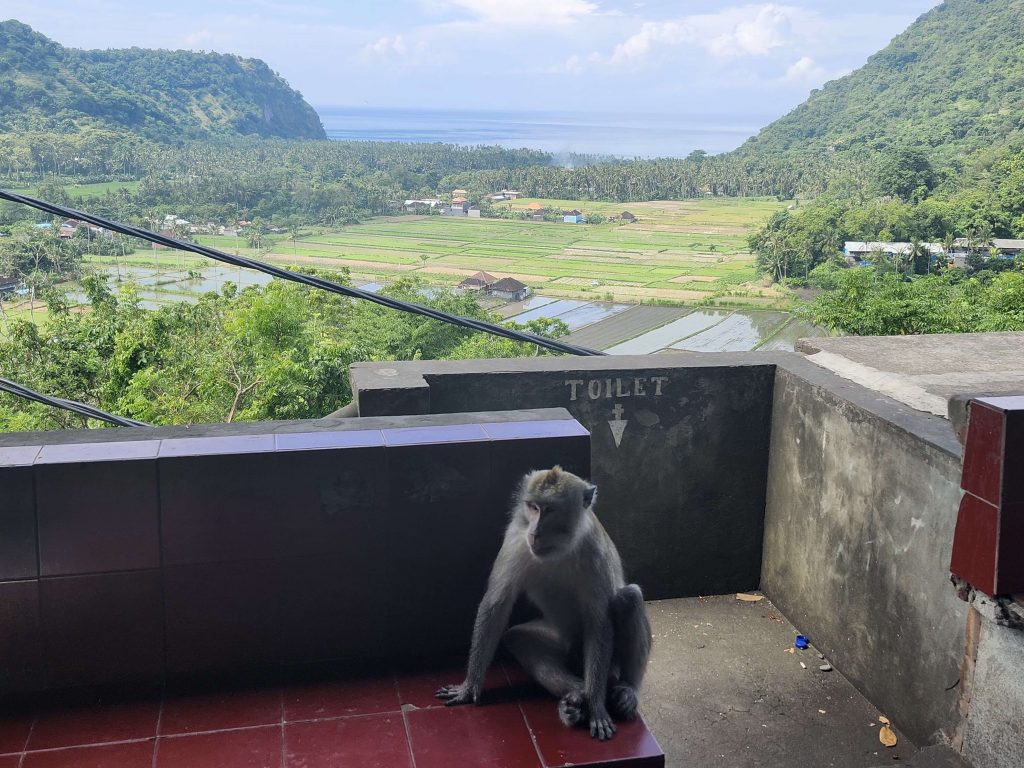
There is a lookout point called Lahangan Sweet which has incredible views of the surrounding area.
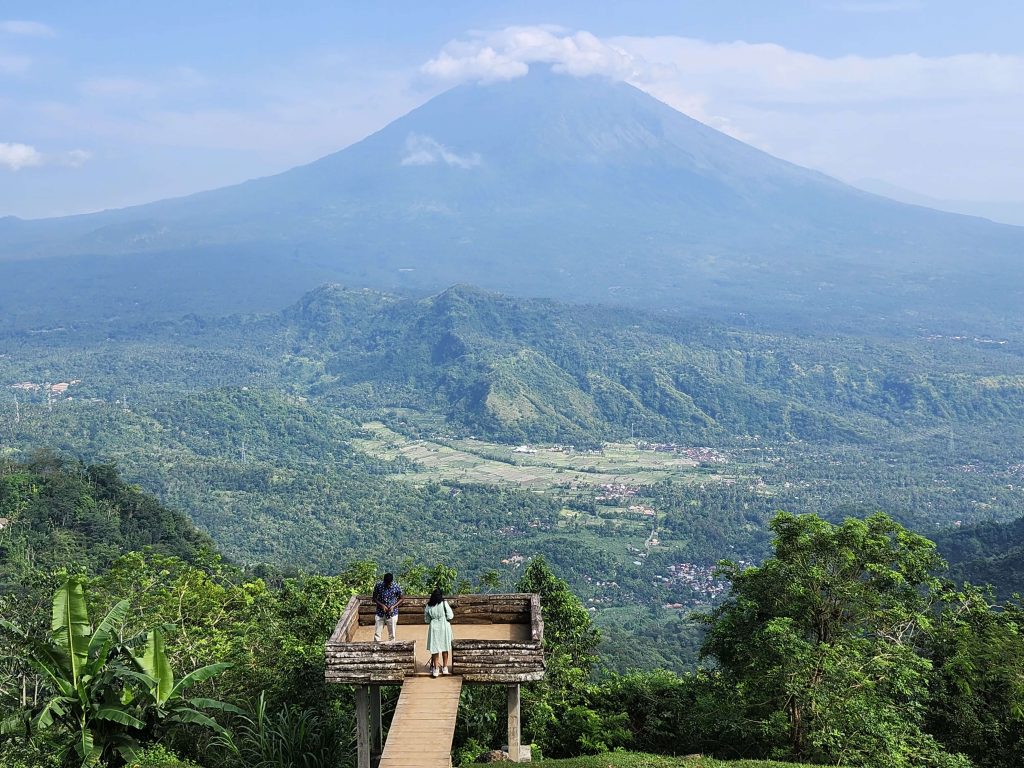
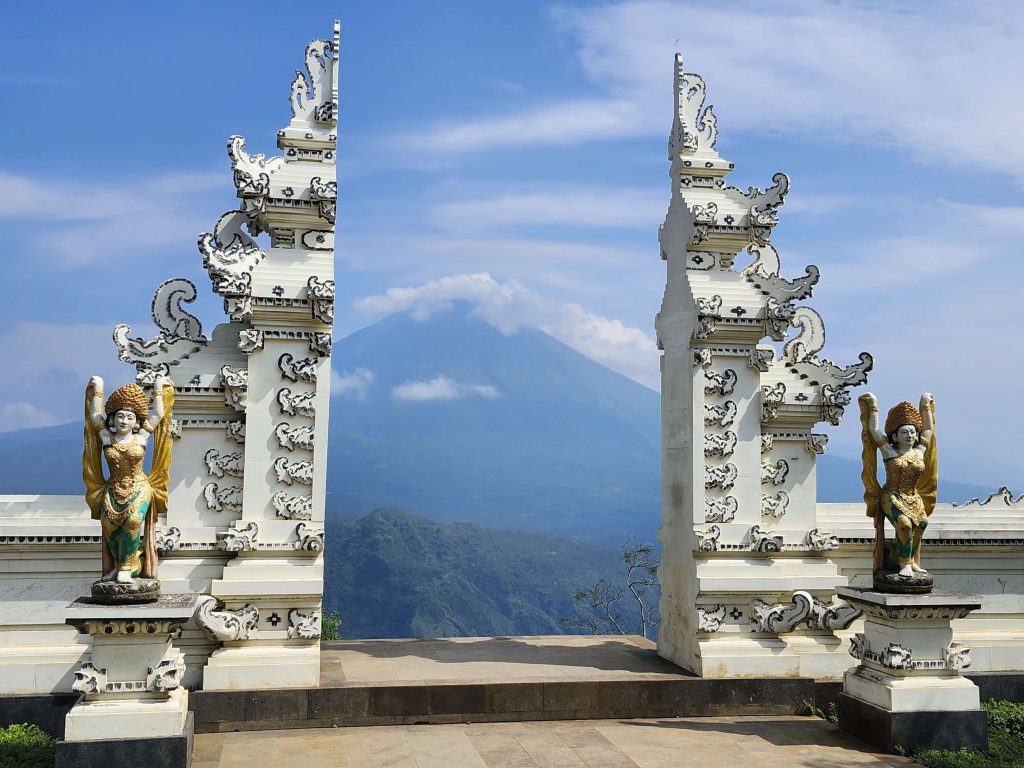
You can also see part the main road of Amed as it winds along the beach from this high lookout.
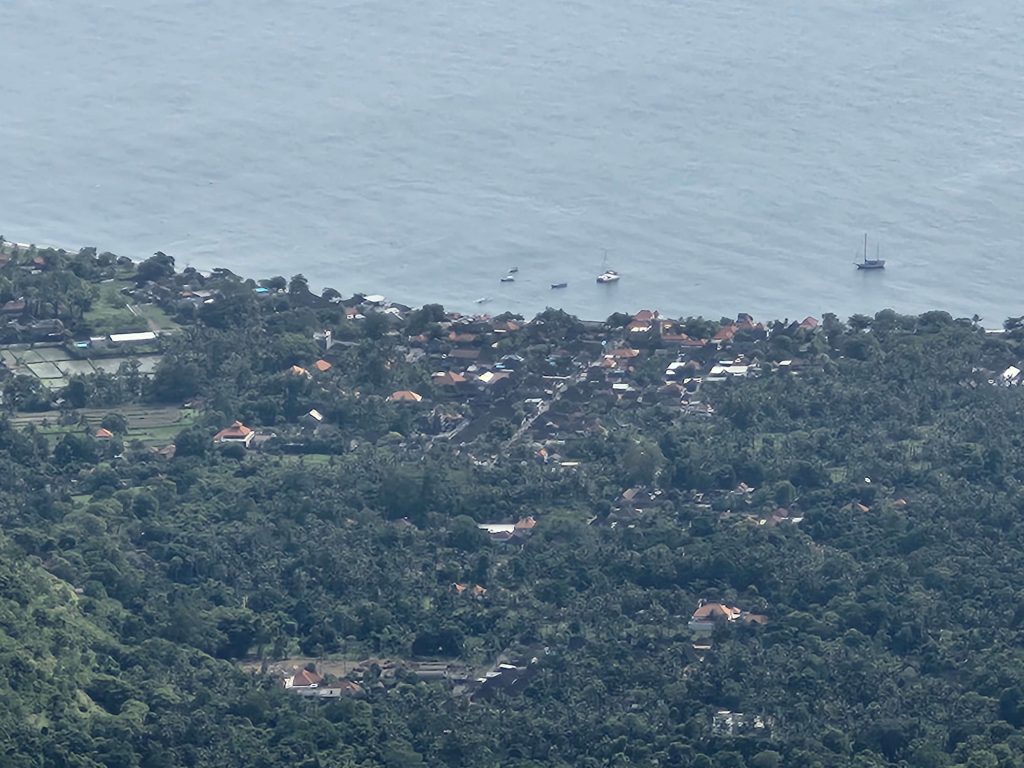
A friend of mine is renting a beautiful villa with great views of rices fields and hills right outside of town.
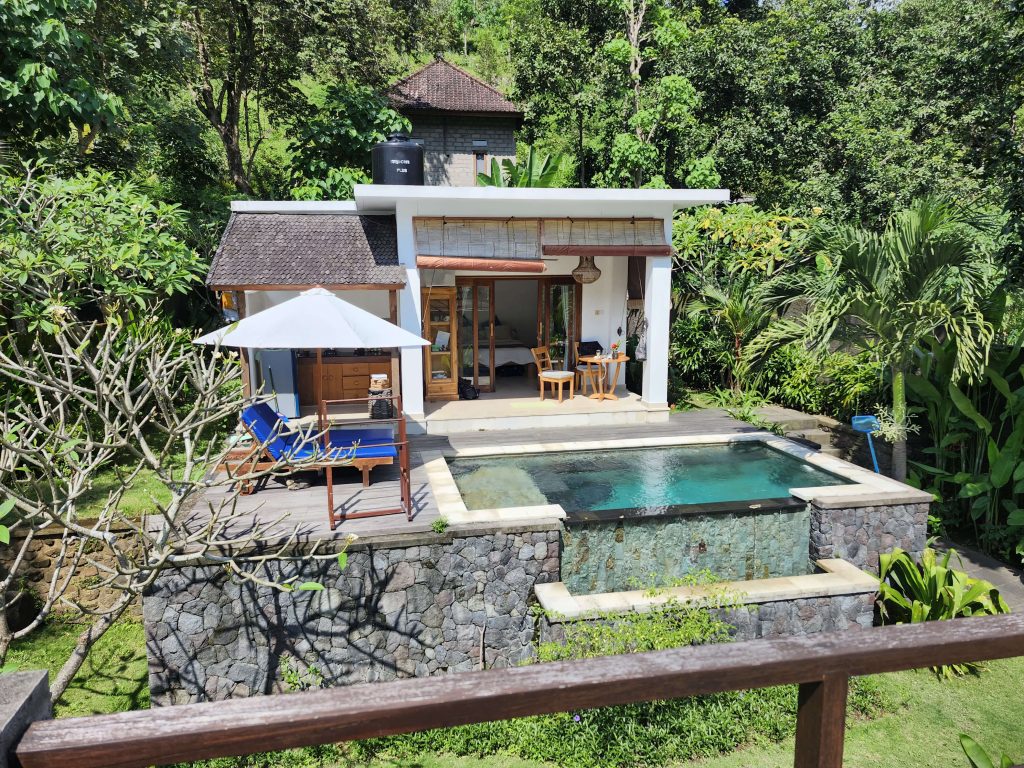
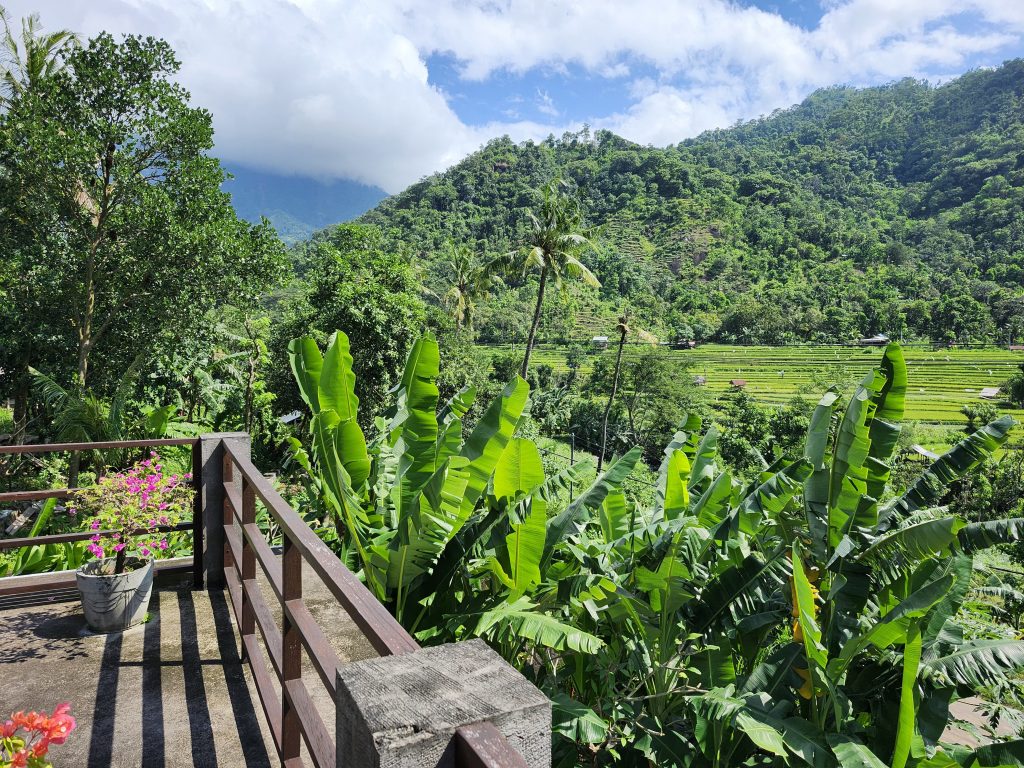
He’s starting construction on a permanent residence right nearby. His land was cleared just before I left. This picture doesn’t do it justice, but the views will be fantastic.
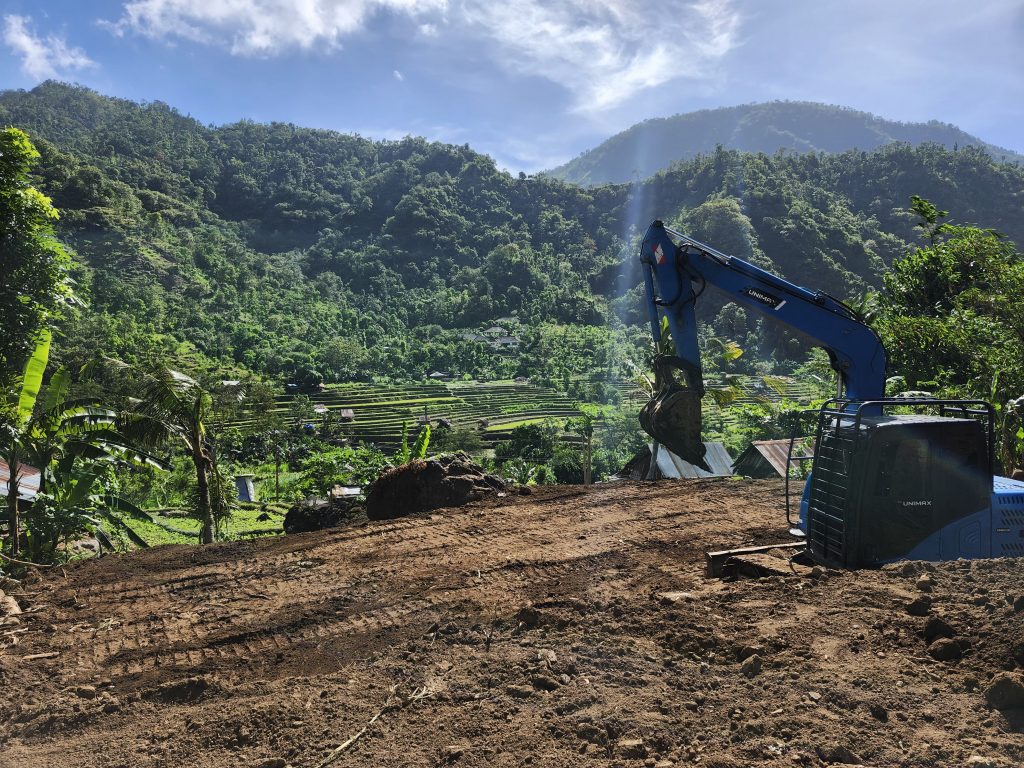
You can get a better sense of the beauty of this area from riding by his place on a scooter.
There’s even a series of four pickleball courts started by an American from Dallas in a jungle area on the edge of town. I played a few times for the first time in my life. I went from completely incompetent to just moderately incompetent 🙂
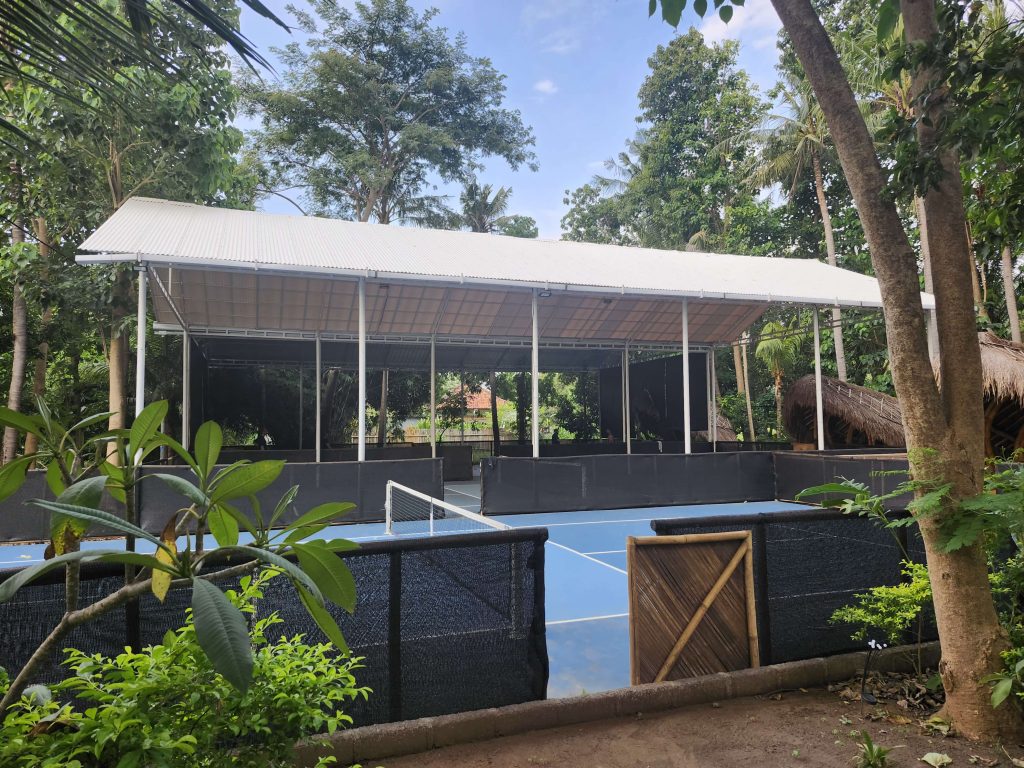
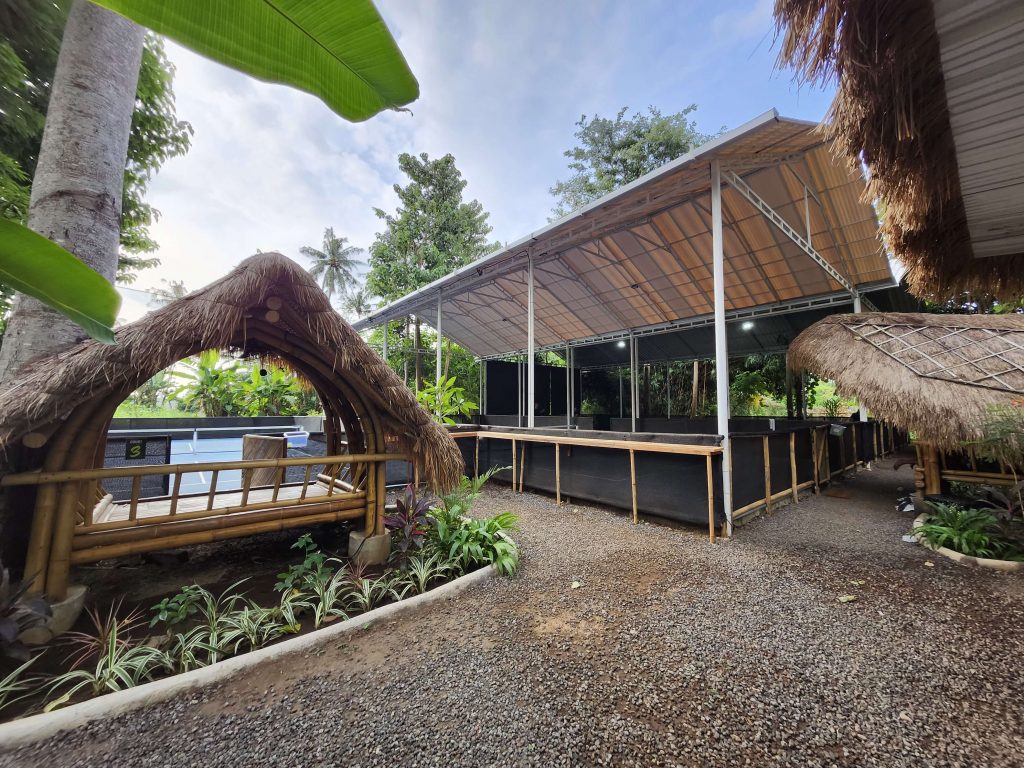
There are small volleyball courts in various spaces sprung out of the jungle. One of the local pickleball instructors was an announcer at the competitive matches played with nearby villages.
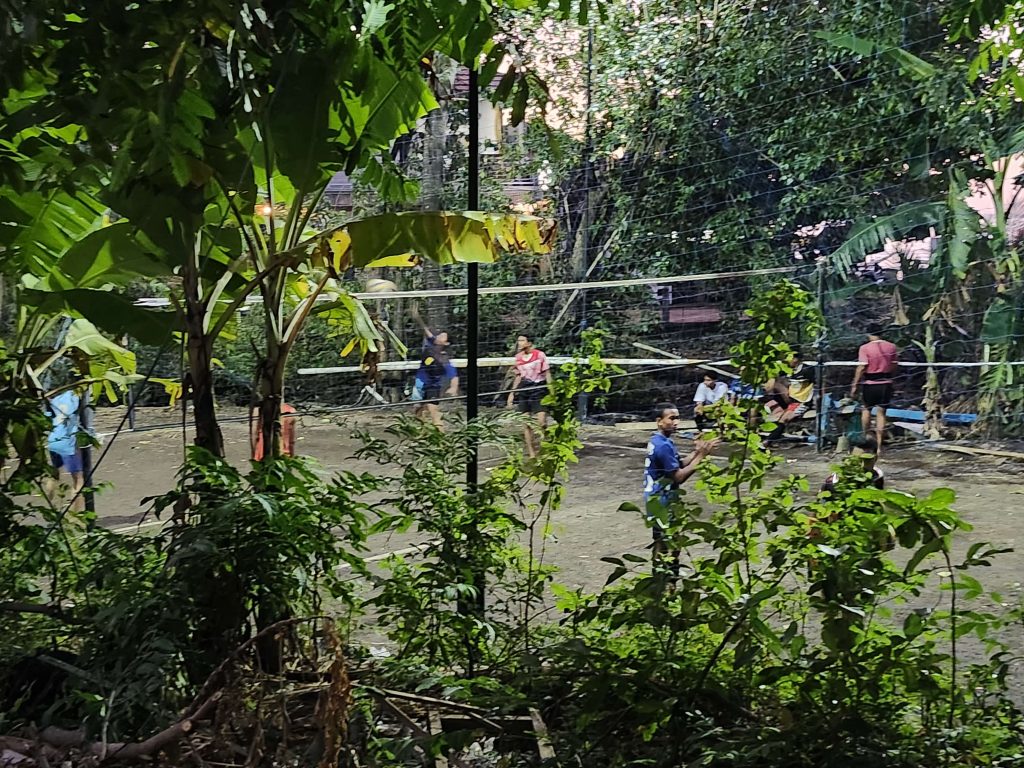
There are a number of small resorts carved into the hills with wonderful views.
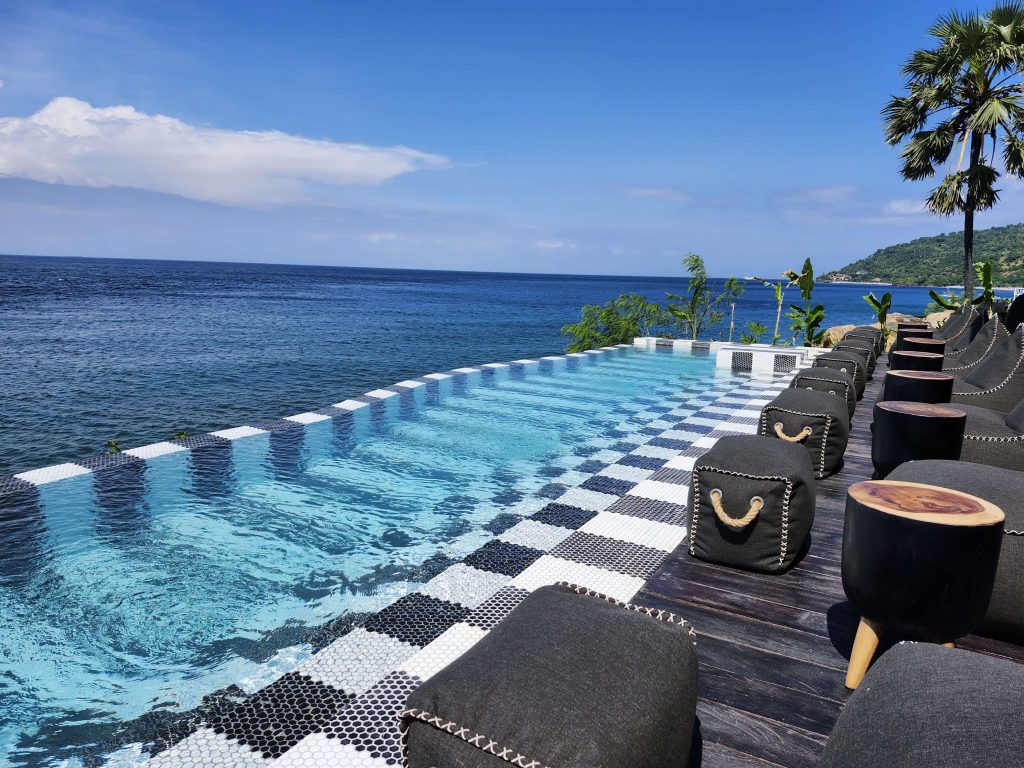
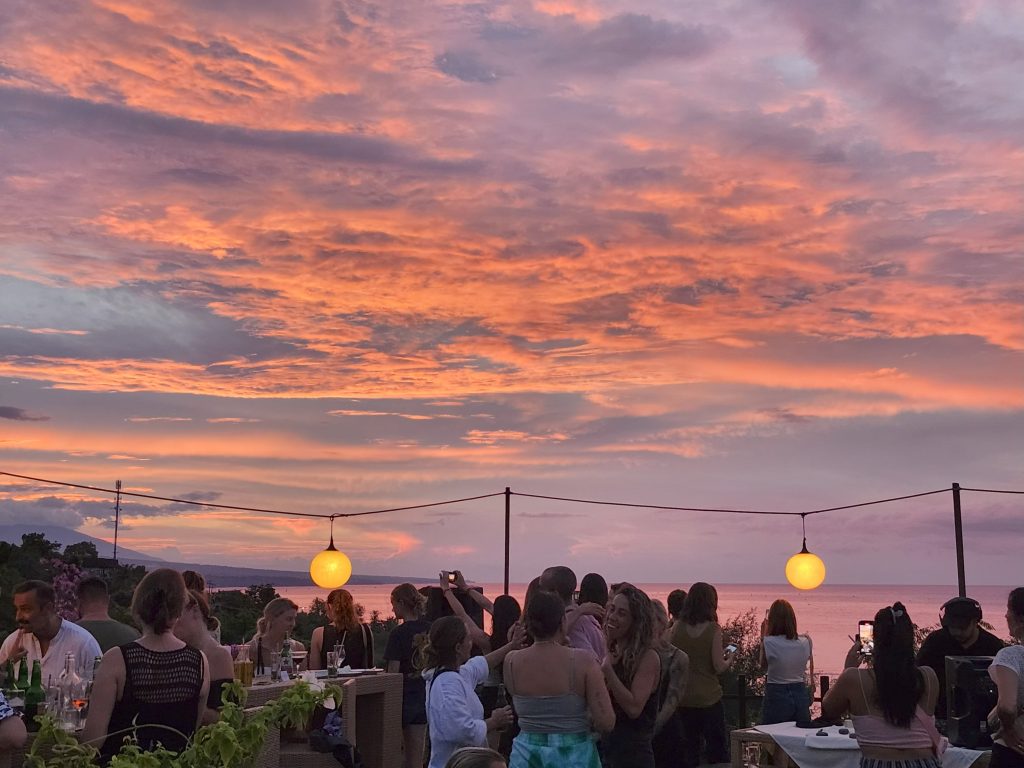
The views from the local restaurants are also very nice.
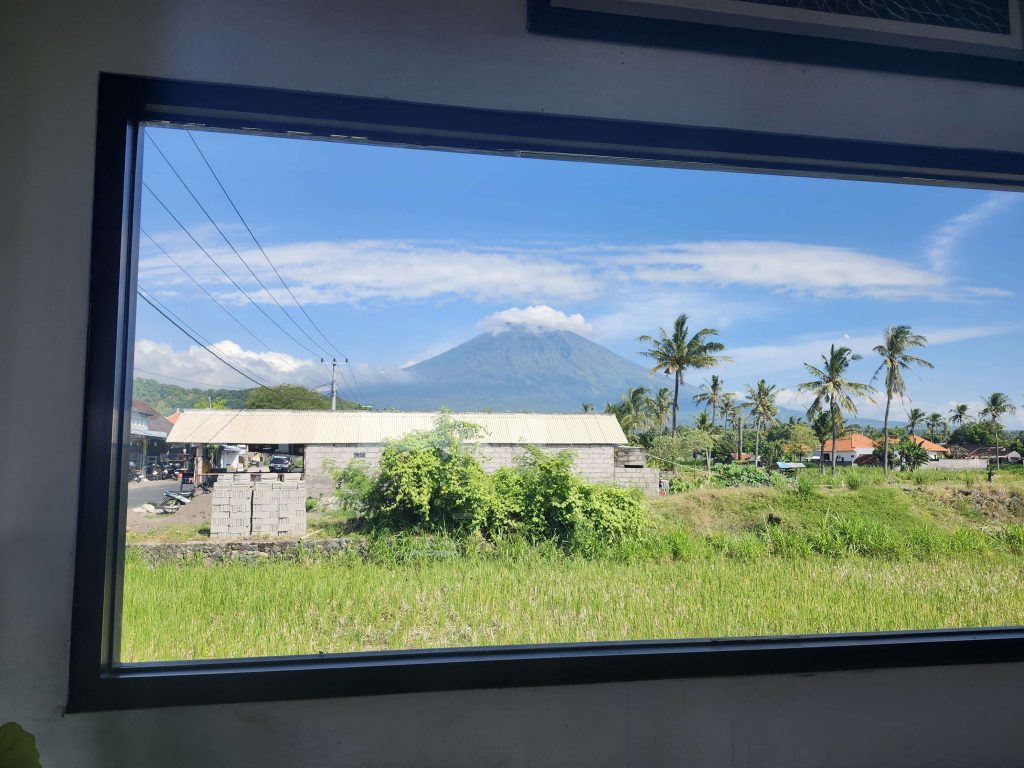
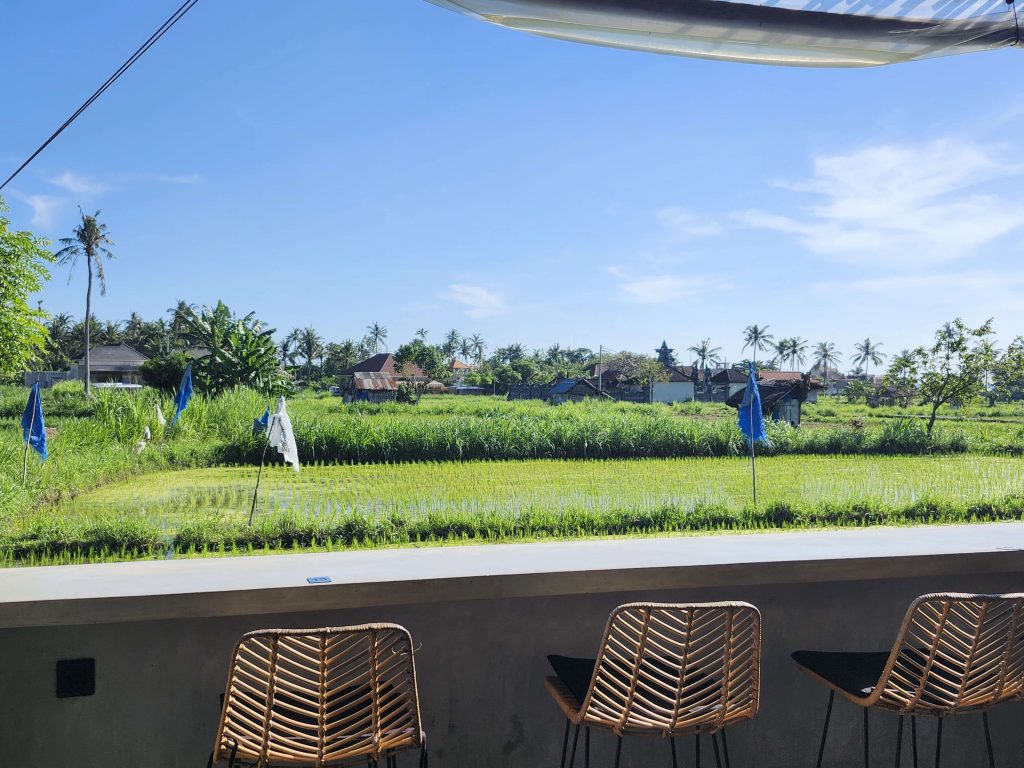
I stayed in a modest, but very comfortable homestay in a quiet part of town.
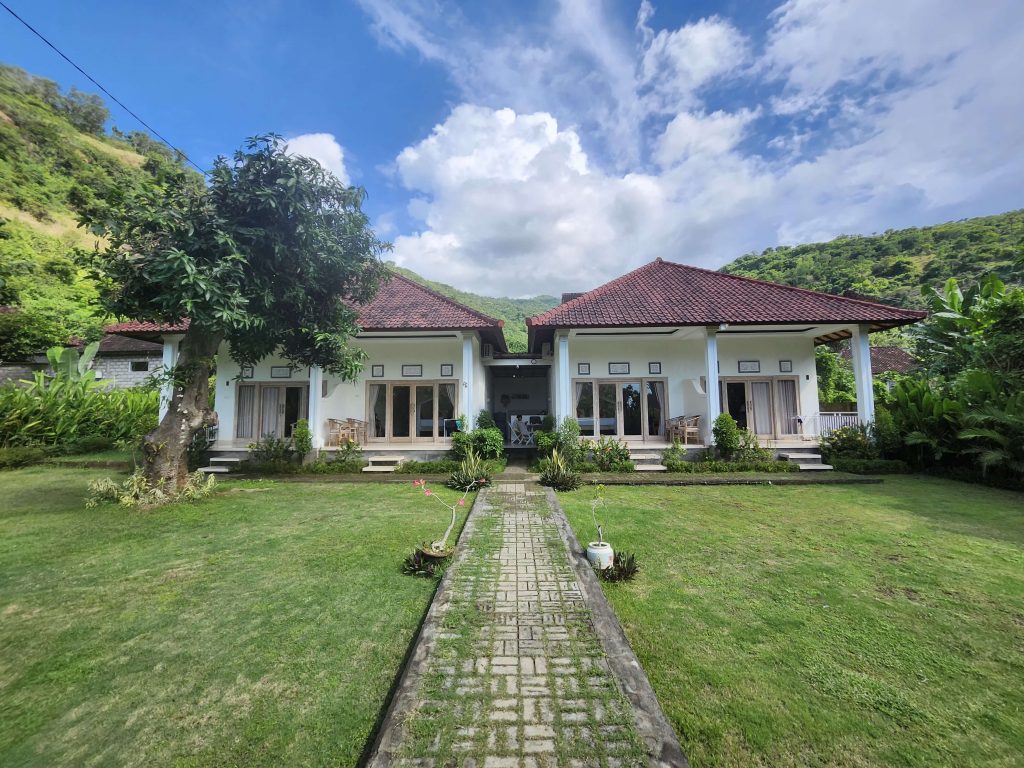
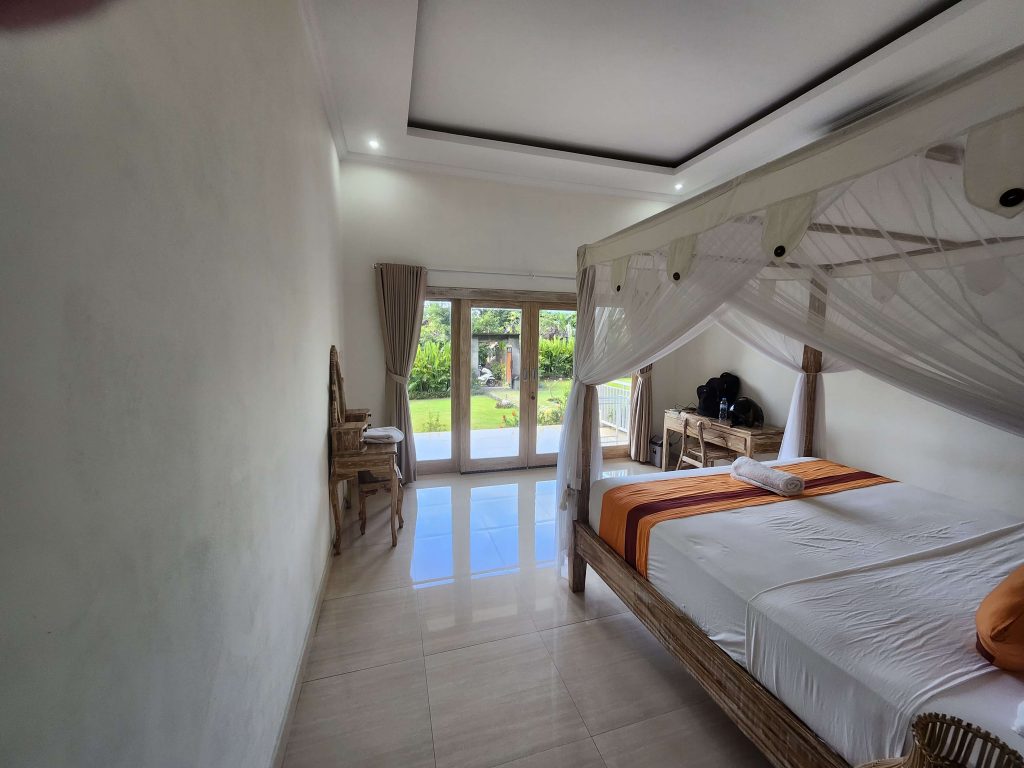
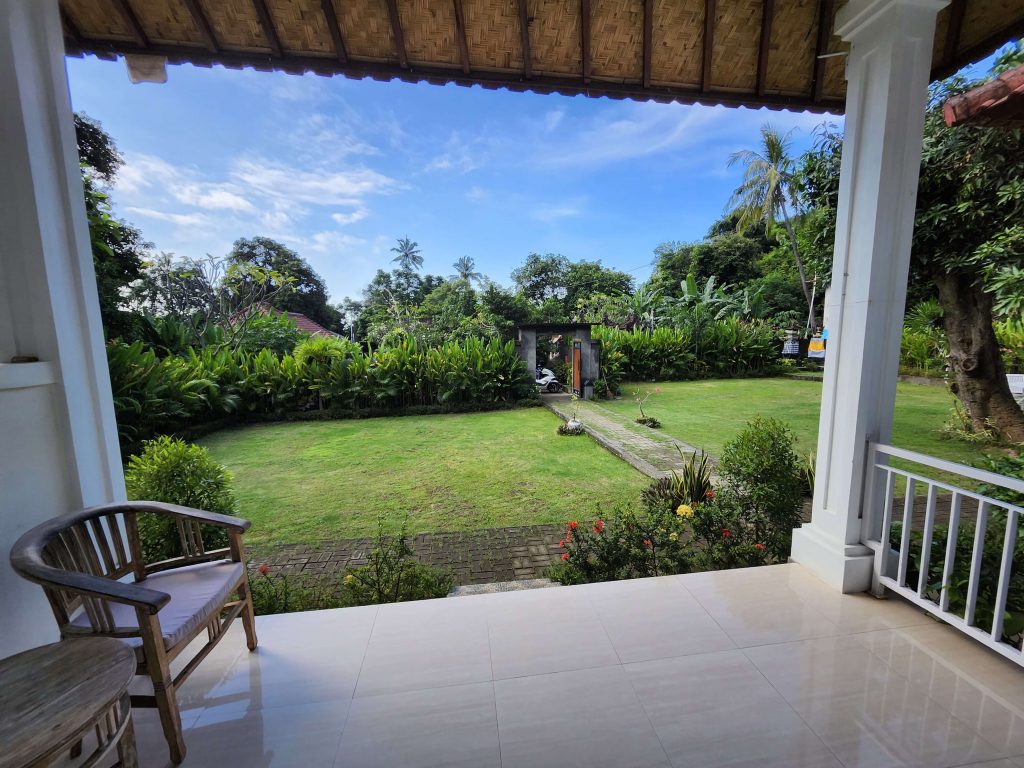
For my memories, here’s the ride in the Jemeluk neighborhood by my place and then entering my homestay.
Life Below The Water
The beating pulse of Amed is below the water. It’s known for its macro diving, where divers have cameras with large macro lens to take pictures of small critters. I just used my GoPro, so I looked for larger life while my friends searched for the really tiny things.
In this case I was filming fish and coral at a place called Pyramids where large concrete structures were build to encourage coral growth.
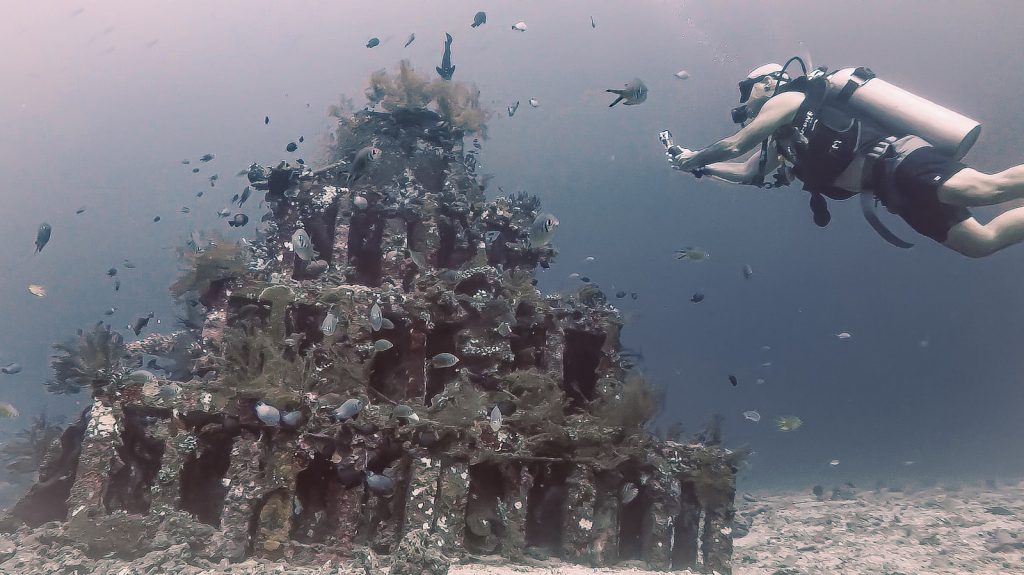
As an example, here’s what a small frogfish looks like on my GoPro.
Here’s my friend coming in after me and doing some serious photography and filming of that same frogfish.
And here’s his Instagram ready finished product.
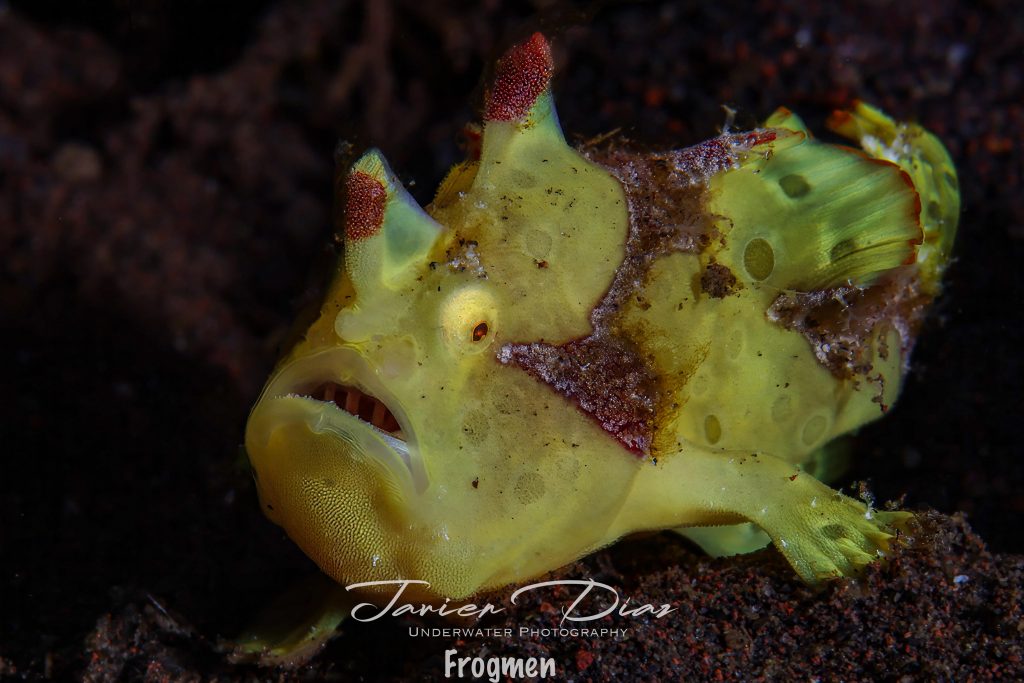
Gili Selang
One of most unique things I did was to learn how to ride a DPV (Diver Propulsion Vehicle). One of my friends here has two of them. We did two easy dives with them right off the beach so I could become acclimated to them.
The reason I learned to ride a DPV was to dive at a site called Gili Selang. This small island is on the easternmost part of Bali in the Lombok Straight. It means there can be some very strong currents here.
We got dropped off from our dive boat at the bottom left part of the island where the water was relatively calm.
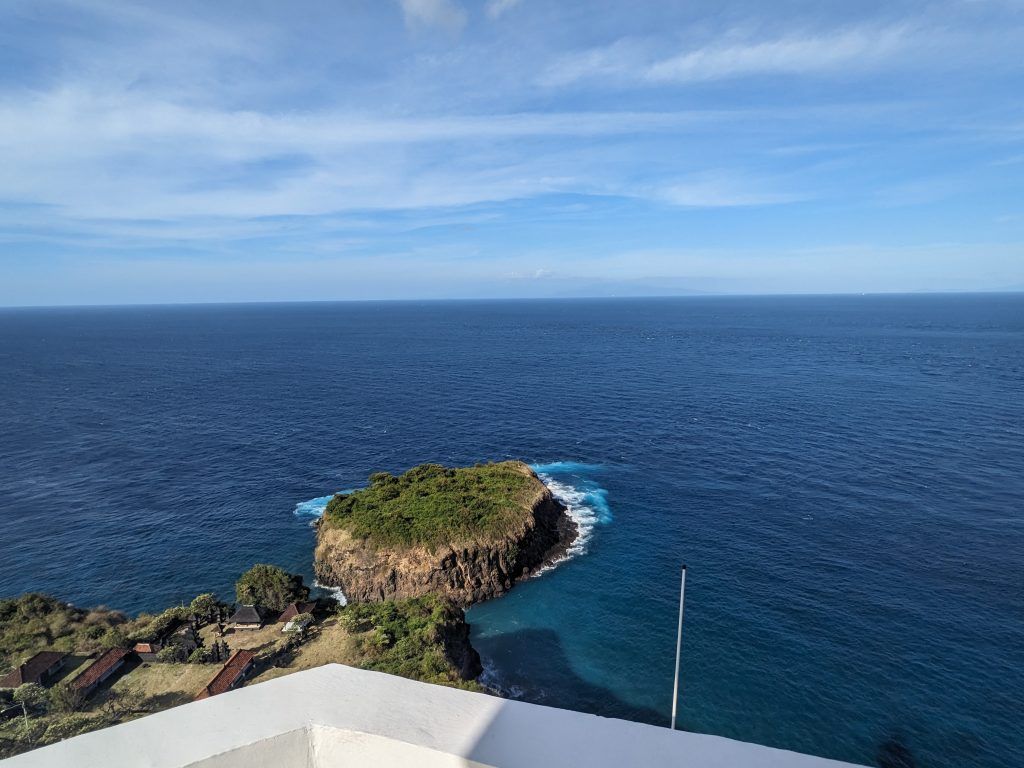
We road the DPVs clockwise around to the other side of the island and then back to where the boat was. We couldn’t ride the island in a complete circle because the water is extremely shallow where it comes close to the mainland.
The current was moderately strong in this video. When we turned a corner it got so strong that I had to put my camera away and put the DPV up to full speed to make headway.
Fortunately, as we moved around the south side of this small island we were protected from the current and could relax and slowly ride around the area.
We saw a really nice 2 meter white tipped reef shark as we began our return trip back to the boat.
It was also a very scenic boat ride to the site.
Liberty Wreck
The most famous diving location near Amed is the Liberty Wreck in nearby Tulamben.
From Wikipedia: “In January 1942, she was en route from Australia to the Philippines with a cargo of railway parts and rubber. On 11 January, Liberty was torpedoed by I-66 about 10 nautical miles (19 km) southwest of the Lombok Strait, near position 08°54′S 115°28′E. US destroyer Paul Jones and Dutch destroyer Van Ghent took the damaged ship in tow attempting to reach Celukan bawang harbour at Singaraja, the Dutch port and administrative centre for the Lesser Sunda Islands, on the north coast of Bali. However she was taking too much water and so was beached on the eastern shore of Bali at Tulamben so that the cargo and fittings could be salvaged. In 1963 the tremors associated with the eruption of Mount Agung caused the vessel to slip off the beach, and she now lies on a sand slope in 25 to 100 feet (7.6 to 30.5 m) of water, providing one of the most popular dive sites off Bali.”
It’s pretty much fallen apart over the years and it’s more of a really nice reef than a traditional wreck dive at this point. It’s incredibly popular because divers of all levels can dive there. It’s also a nice free diving location.
Boga Wreck
A more traditional type of wreck dive is the Boga Wreck. It was originally a Dutch built cargo ship built in the 1930s and was sunk in 2012 to form an artificial reef.
I had received my free diving certification when I was in Amed two years ago. This trip I was in the Ecodive Center talking with the owner when my free diving instructor randomly came in with her husband. We recognized each other and spent some time catching up. They were also scuba divers and now wanted to get their advanced certification. My friend who works at Ecodive became their instructor for the course. They all invited me to join them on their last dive for their certification. As part of the certification they had to do a dive at 30 meters (100 feet). We all brought raw eggs down and cracked them open at that depth to show how the water pressure kept the eggs together. We all also had a bit of nitrogen narcosis and were a little goofy as we did this.
As you can see, unlike the Liberty Wreck, this dive was actually going through a completely enclosed ship.
Night Dive
I did one night dive near the beginning of my time in Amed. We wanted to see coconut octopuses, who only come out at night. They get their name because they use tools like coconut shells to create shelters for themselves. There were no coconut shells in the water when we dived, so these clever animals used plastic refuse instead. In the first video my friend is reaching out to see if the octopus will climb on his hand, which he’s had happend before.
A couple of cool looking crabs scuttling by.
A beatiful lionfish displaying its color under the light.
In the daytime sea urchins are usually pretty inert. As you can see, they are much more active at night.
Nudibranches
Nudibranches are the stars of the diving scene around Amed. It’s why so many people dive here with their large sophisticated cameras. They are a fascinating species as documented by Wikipedia: https://en.wikipedia.org/wiki/Nudibranch
Most nudibranches are incredibly tiny and are not able to be filmed or photographed with simple GoPros. To get a sense of the variety of these cool creatures you can see these Getty Images stock photos: https://www.gettyimages.com/photos/nudibranch
However we did see a few that were large enough to be shot with my GoPro. You can get a sense of rich variety of shapes and colors just from these few videos.
Other Sea Life
There are of course lots of other types of sea life in the sands and rocks of these dive sites, starting with a couple of cool looking seahorses.
Ghost pipefish are related to seahorses. Their shape is incredibly unusual and allows them to blend into their environment.
Mantis shrimp are one of my favorite small sea animals. They are believed to have the most sophisticated vision of any animal. They also have a second pair of claws that can accelerate at a rate comparable to that of a .22 caliber bullet when fired. These are used to smash their prey.
The flying gunards have pectoral fins that are normally held against the body. But when threatened the fins are expanded to startle potential predator. That makes them look like they are flying. Gunard is a French word that means “to grunt” which comes from the grunting sound they can make when produce sounds with their swim bladder.
Cuttlefish are relatives to octopus. They are considered to be just as clever as octopus and can also easily change their color to match their surroundings.
Scorpionfish are named from their extremely poisonous spines which can sting like a scorpion. They are masters of staying motionless and blending into their surroundings.
Here this young scorpionfish can’t figure out if it should stop and hide or continue moving forward.
The devil scorpionfish is one of the more exoticly shaped scorpionfish.
The pistol shrimp is blind. It will dig a den for the goby fish and the goby fish will watch the surroundings and let the shrimp know when to hide. Usually it’s hard to film these two together because the fish will have the shrimp hide the moment a diver is nearby. In this case I was able to somehow sneak up on them.
The flounder is one strange fish to watch in person.
Coral
While Amed is not known for extensive coral reefs, there are still some places that have nice, healthy coral beds.
There are also wide swaths of the area around Amed with destroyed coral.
From Wikipedia: “Up until the 1980s, Amed and its area had traditional salt fields on the beaches and notably rich coastal waters. In the late 80’s, two things happened: the introduction of the fishing net as an “innovative” and more efficient fishing method, and the start of the tourism industry. The nets would get caught in the reefs, and there was a growing demand for building materials. So over several years the locals destroyed the reefs in front of Amed village as a solution to both problems – thus creating a far bigger one – similar to that in Candidasa : their beach, unprotected from the pounding of the waves, shrunk by 100 metres – a process helped by global warming which raises the ocean surface -, along with the salt fields – and the marine life that attracted tourists in the first place.”
John Huxley, the owner of Ecodive has been in Amed for over 25 years. He remembers the beaches being much larger when he arrived.
Here’s a video of one of these coral graveyards.
